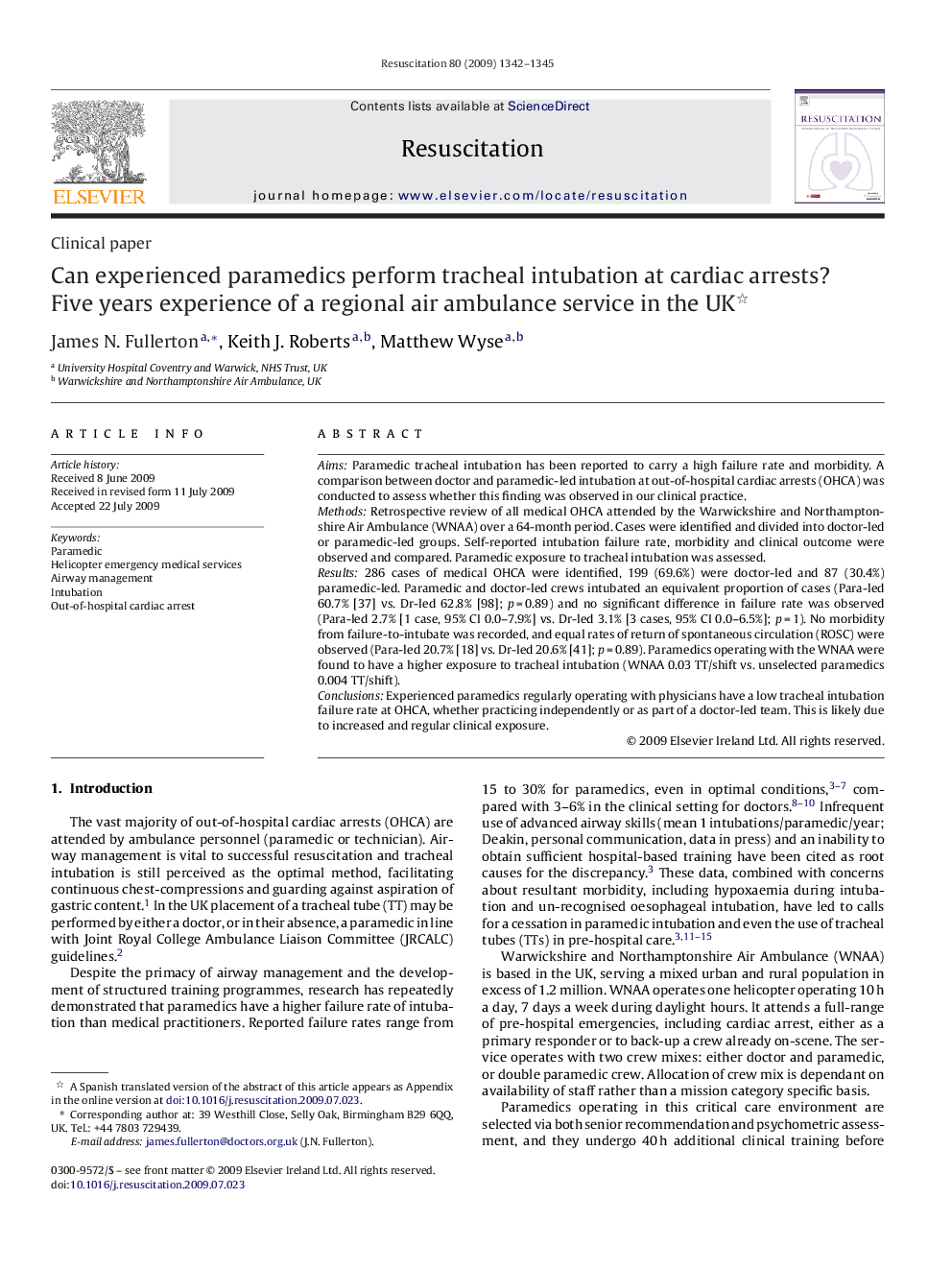| Article ID | Journal | Published Year | Pages | File Type |
|---|---|---|---|---|
| 3009369 | Resuscitation | 2009 | 4 Pages |
AimsParamedic tracheal intubation has been reported to carry a high failure rate and morbidity. A comparison between doctor and paramedic-led intubation at out-of-hospital cardiac arrests (OHCA) was conducted to assess whether this finding was observed in our clinical practice.MethodsRetrospective review of all medical OHCA attended by the Warwickshire and Northamptonshire Air Ambulance (WNAA) over a 64-month period. Cases were identified and divided into doctor-led or paramedic-led groups. Self-reported intubation failure rate, morbidity and clinical outcome were observed and compared. Paramedic exposure to tracheal intubation was assessed.Results286 cases of medical OHCA were identified, 199 (69.6%) were doctor-led and 87 (30.4%) paramedic-led. Paramedic and doctor-led crews intubated an equivalent proportion of cases (Para-led 60.7% [37] vs. Dr-led 62.8% [98]; p = 0.89) and no significant difference in failure rate was observed (Para-led 2.7% [1 case, 95% CI 0.0–7.9%] vs. Dr-led 3.1% [3 cases, 95% CI 0.0–6.5%]; p = 1). No morbidity from failure-to-intubate was recorded, and equal rates of return of spontaneous circulation (ROSC) were observed (Para-led 20.7% [18] vs. Dr-led 20.6% [41]; p = 0.89). Paramedics operating with the WNAA were found to have a higher exposure to tracheal intubation (WNAA 0.03 TT/shift vs. unselected paramedics 0.004 TT/shift).ConclusionsExperienced paramedics regularly operating with physicians have a low tracheal intubation failure rate at OHCA, whether practicing independently or as part of a doctor-led team. This is likely due to increased and regular clinical exposure.
